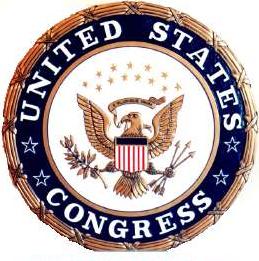-Introduction-
When the Founding Fathers wrote the Articles of Confederation, they were mindful of avoiding the threat of a strong, central power that would eventually revert back to the monarchy they had so bitterly struggled to rebel against. Nevertheless, they recognized the threat of establishing a government solely dependent on the vote of every citizen. Representation of every American was a common goal; however, the manner in which they accomplished this task had to be wary of the negative factors of a direct democracy. Therefore, a system of representation had to be constructed in order to both represent the interests of all participants in the fledgling democracy while simultaneously making sure order through majority rule was preserved. With this in mind, Congress was born. Housing a group of representatives from all over the nation, the duty of Congress was to defend the interests and necessities of their constituents. The legislative branch is essentially the branch of government closest to the people of the United States. Because of its accessibility, this branch allows for the ordinary citizen to have a voice in the evolution of an entire nation far more than the Executive or Judicial entities do.
 (2)
(2)
The quintessential principle behind the concept of Congress is participation. At its core, Congress is driven on the initiative of the common citizen and his/her ability to educate and express an opinion. Without the involvement of the people, the very idea of a representative democracy is voided. Truly a symbiotic relationship, Congress without a participatory constituent pool would be unable to function just like its constituents would not be able to express themselves without referring to Congress. To utilize Congress, it is the civic duty of all citizens to take hold of the political reigns and control the government originally established to serve the people.
Congress, in an effort to clearly express the voice of the people, is divided into two parts. These two bodies of the legislature are different because of the way they are meant to represent their constituents. While the Founding Fathers debated over the technicalities of Congress, a clear divide appeared between those who wished representation to be accorded by state size and those who wished it to be egalitarian, no matter how large the population of a state. A compromise had to be reached, and it is exemplified by the two bodies of Congress. The House of Representatives draws members from each district of a state. The more populace the state, the more districts it has and therefore the more representatives. This legislative body appeals to the proponents of a system of representation based on state population. The Senate, on the other hand, awards each state two senators no matter what its population or geographical size. This is a textbook example of checks and balances. During this chapter, you will encounter many checks and balances that were put in place by the Founding Fathers in order to create a perfect, harmonious democracy. Now that the dry stuff is out of the way, let's have some fun!!!
 (1)
(1)
<-Previous Page Congress, Title Page Next Page Introduction to Congress ->
Comments (0)
You don't have permission to comment on this page.